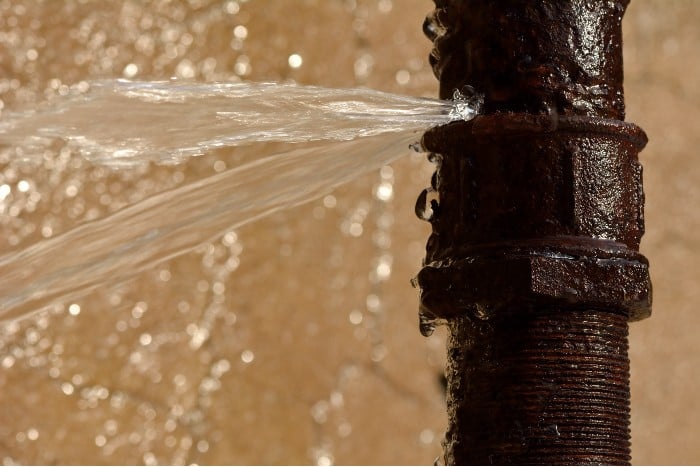Exploring the Top Six Causes of Water Leaks in Homes
Call TodayWe've noticed this great article relating to How to detect water leaks in your home down the page on the web and concluded it made good sense to discuss it with you on my blog.

Leaks not just cause waste of water yet can additionally create unneeded damages to your house and advertise unwanted natural development. Water leaks could go undetected given that many of the pipework in our home is concealed. By comprehending as well as looking for day-to-day scenarios that create leaks, you can safeguard your house from future leakages and unneeded damages. Today, we will certainly take a look at six leakage creates that may be creating your pipelines to drip.
Trespassing roots
The majority of water leaks start outside your house instead of inside it. If you observe an unexpected reduction in water pressure, claim in your tap, require time to go out as well as examine your backyard. You might discover damp spots or sinkholes in your yard, and that could mean that tree roots are getting into water lines causing water to permeate out. You can have your plumber look for invasion, especially if you have trees or shrubs near your home.
Rusty water systems
As time passes by, your plumbing system ages and also deterioration such as corrosion may start gnawing the pipes. This may be the root cause of staining or bending on your pipes. This requires an evaluation with your plumber instantly. Take into consideration replacing the pipelines given that they are at a greater threat of deterioration than the more recent models if our plumbing system is old.
Malfunctioning Pipeline Joints
Pipe joints can deteriorate over time, resulting in water leakages. If you have loud pipelines that make ticking or banging sounds, particularly when the hot water is turned on, your pipeline joints are most likely under a great deal of pressure.
Instantaneous temperature changes.
Extreme temperature modifications in our pipelines can trigger them to increase and also get unexpectedly. This growth as well as contraction may cause splits in the pipelines, especially if the temperature level are below freezing. It would be best if you kept an eye on exactly how your plumbing works. The visibility of the formerly mentioned situations frequently shows a high danger.
Poor Water Connectors
Sometimes, a leak can be brought on by loosened hose pipes and also pipelines that provide your home appliances. Most of the time, shifting is what creates the loose water Connections. You could discover in the case of a washing equipment, a tube might spring a leak because of trembling during the spin cycle. In case of a water links leakage, you might notice water running straight from the supply line or puddles around your appliances.
Clogged Drains
Obstructed drains might be irritating as well as inconveniencing, however they can occasionally end up triggering an overflow causing burst pipelines. Maintain eliminating any products that may go down your drains pipes that can block them to prevent such aggravations.
All the above are causes of leaks but not all water leaks result from plumbing leakages; some leaks might come from roofing leaks. All leaks need to be fixed right away to avoid water damage.
Leakages not just create waste of water however can also create unnecessary damage to your house as well as advertise unwanted natural development. By understanding and looking for day-to-day situations that trigger leakages, you can protect your house from future leaks as well as unnecessary damages. Today, we will certainly look at 6 leakage triggers that might be creating your pipelines to drip.
At times, a leak can be caused by loose pipes and also pipes that supply your devices. In situation of a water links leak, you may discover water running directly from the supply line or pools around your devices.
How To Check For Water Leak In Your Home
How To Check for Leaks
The average household's leaks can account for nearly 10,000 gallons of water wasted every year and ten percent of homes have leaks that waste 90 gallons or more per day. Common types of leaks found in the home are worn toilet flappers, dripping faucets, and other leaking valves. These types of leaks are often easy to fix, requiring only a few tools and hardware that can pay for themselves in water savings. Fixing easily corrected household water leaks can save homeowners about 10 percent on their water bills.
To check for leaks in your home, you first need to determine whether you're wasting water and then identify the source of the leak. Here are some tips for finding leaks:
Take a look at your water usage during a colder month, such as January or February. If a family of four exceeds 12,000 gallons per month, there are serious leaks.
Check your water meter before and after a two-hour period when no water is being used. If the meter changes at all, you probably have a leak.
Identify toilet leaks by placing a drop of food coloring in the toilet tank. If any color shows up in the bowl after 10 minutes, you have a leak. (Be sure to flush immediately after the experiment to avoid staining the tank.)
Examine faucet gaskets and pipe fittings for any water on the outside of the pipe to check for surface leaks.
Undetected water leaks can happen without the home or business owner even realizing. If you suspect a water leak, but not able to find the source. It is time to contact a professional water leak detection service, The Leak Doctor.
How To Find a Water Leak In Your Home
https://www.leakdoctor.com/blog/How-To-Check-For-Water-Leak-In-Your-Home_AE197.html

Hopefully you enjoyed our part on How to detect water leaks in your home. Thanks a lot for spending some time to browse our content. Kindly set aside a second to distribute this content if you appreciated it. We enjoy reading our article about How to Find Water Leaks.
Call Today